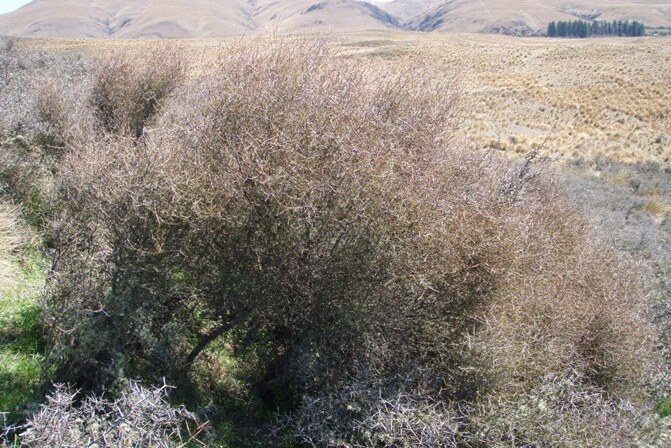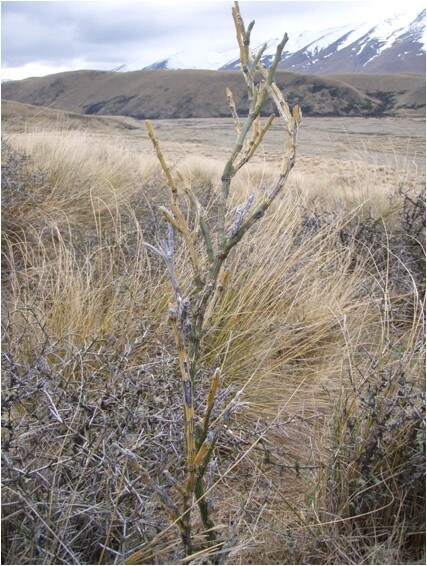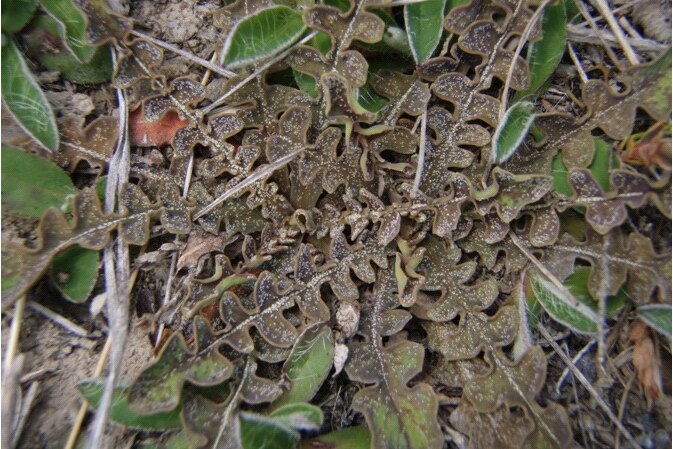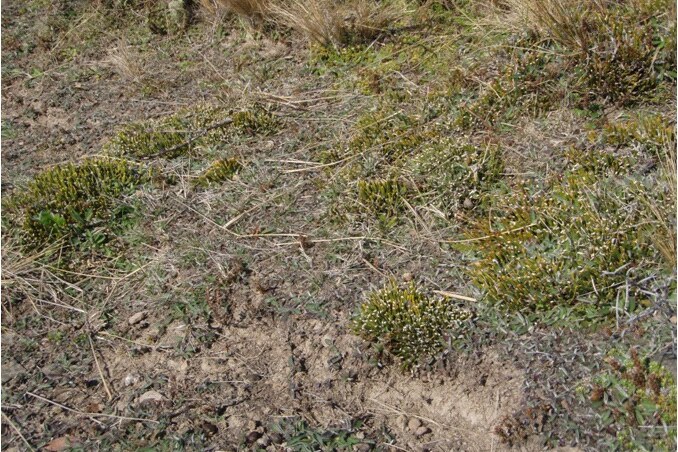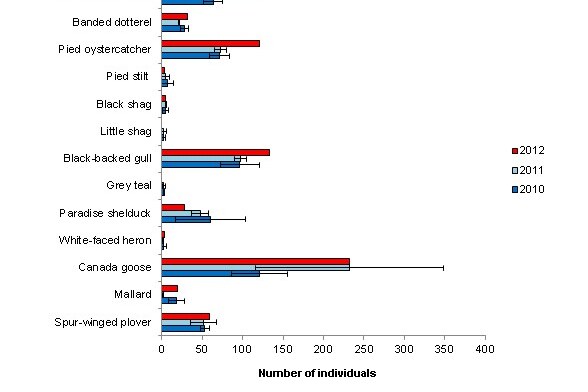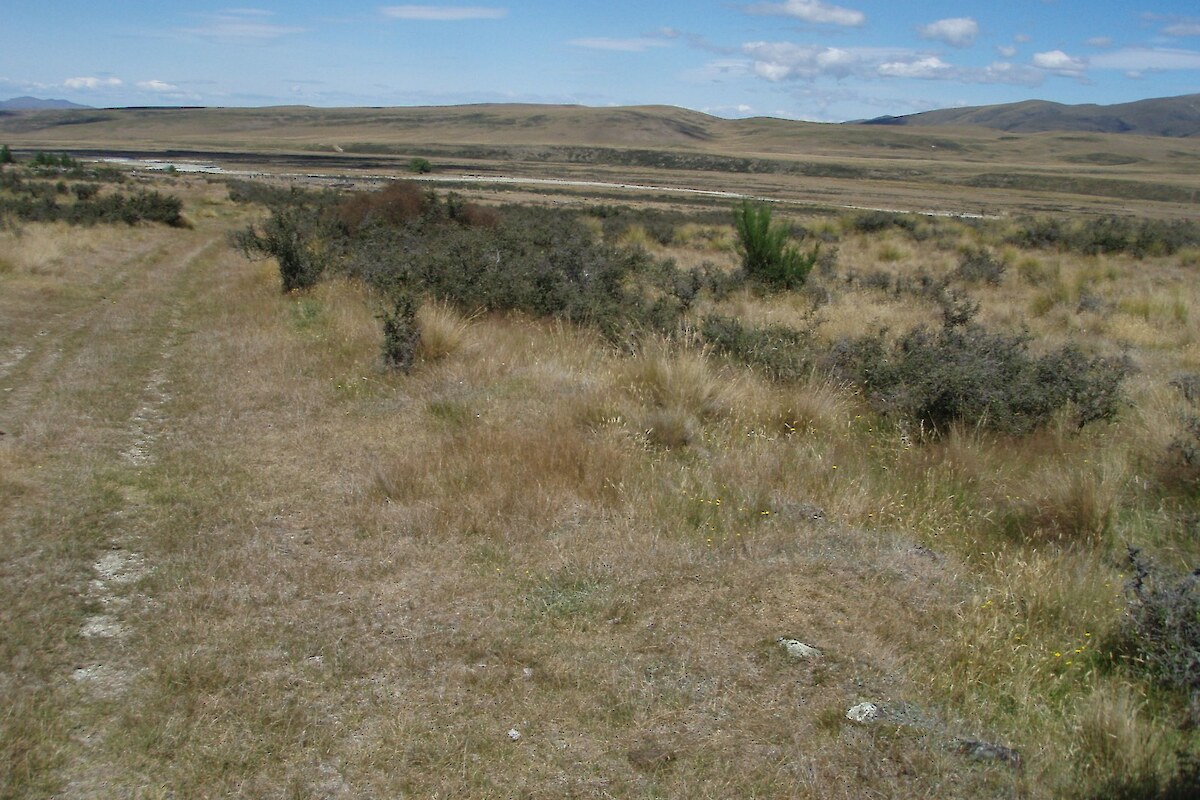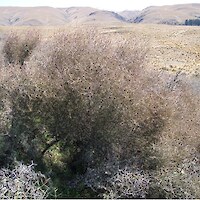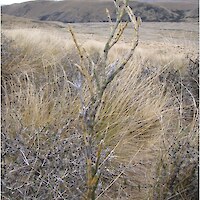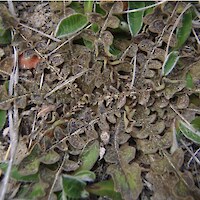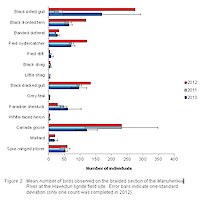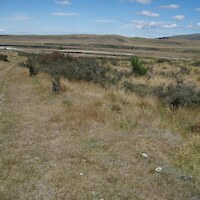L &M Hawkdun Lignite Ltd is undertaking investigations into the feasibility of coal mining at the Hawkdun lignite field near St Bathans, in Central Otago.
A desktop assessment of ecological values present at the site and a one day field visit undertaken in February 2010 revealed the need for surveys of rare plant species and braided river birds.
A survey for rare plant species undertaken in spring 2010 recorded the presence of Acaena tesca (At Risk-Naturally Uncommon), Carmichaelia crassicaulis subsp. crassicaulis and Carmichaelia vexillata (both At Risk-Declining), Leptinella serrulata (At Risk-Naturally Uncommon), Coprosma intertexta (At Risk-Relict), and the significant discovery of Kirkianella novae-zelandiae (Threatened-Nationally Vulnerable). The two most abundant of these species were coral broom and Coprosma intertexta, while the remaining four species were observed at only a few sites.
Surveys undertaken over 10 km of the braided Manuherikia River in 2010, 2011, and 2012 identified 14 species of birds, including banded dotterel (Charadrius bicinctus bicinctus; Threatened-Nationally Vulnerable), black-fronted tern (Chlidonias albostriatus; Threatened-Nationally Endangered), black-billed gull (Larus bulleri; Threatened-Nationally Critical), pied stilt (Himantopus himantopus leucocephalus; At Risk-Declining), pied oystercatcher (Haematopus finschi; At Risk-Declining), and black shag (Phalacrocorax carbo novaehollandiae; At Risk-Naturally Uncommon). Black-billed gull, black-fronted tern, and banded dotterel use the braided section of the Manuherikia River regularly and in substantial numbers. This section of the river is likely to be internationally and nationally important for black-fronted tern.


